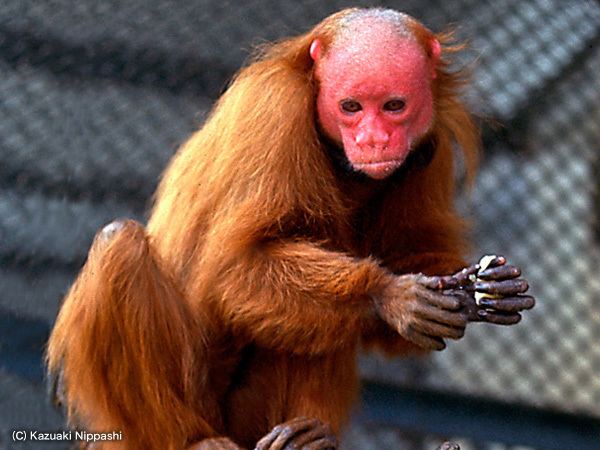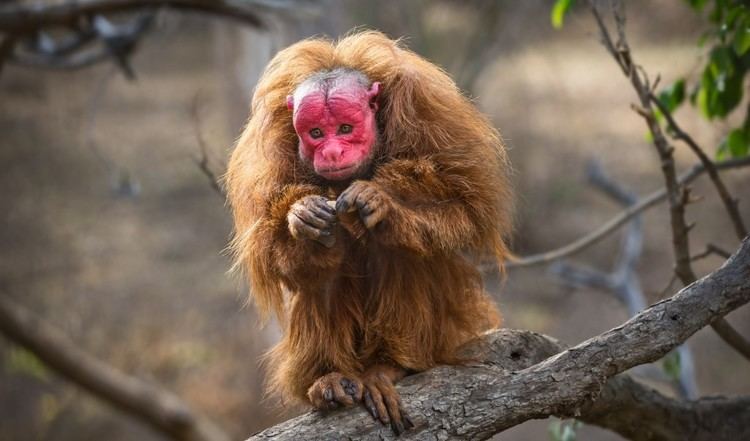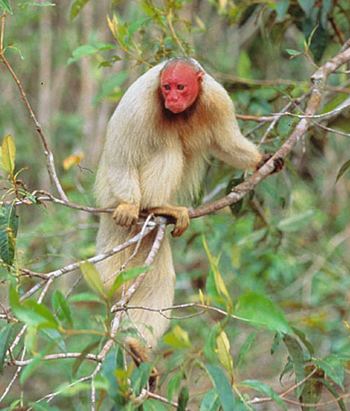Higher classification Pitheciinae | Phylum Chordata Scientific name Cacajao Rank Genus | |
 | ||
Lower classifications Bald uakari, Golden‑backed uakari | ||
The white bald headed uakari
Uakari is the common name for the New World monkeys of the genus Cacajao. Both the English and scientific names are believed to have originated from indigenous languages.
Contents

The uakaris are unusual among New World monkeys in that the tail length (15-18 cm) is substantially less than their head and body length (40-45 cm). Their bodies are covered with long, loose hair but their heads are bald. They have almost no subcutaneous fat, so their bald faces appear almost skull like. Like their closest relatives the saki monkeys, they have projecting lower incisors.

The four species of uakari currently recognized are all found in the north-western Amazon basin. The bald uakari is found north of the Amazon River, and south of the Japurá River in the Mamirauá Sustainable Development Reserve. The black-headed uakari is found north of the Amazon and south of the Rio Negro. The Neblina uakari is found north of the Rio Negro, west of the Rio Marauiá and east of the Casiquiare canal. The Aracá uakari is currently known only from the Rio Curuduri basin.

Uakaris are typically lethargic and silent in zoo conditions, but in the wild they are agile and active, capable of leaps of over 6 meters. They have been observed both in small groups and in larger troops of up to 100. When traveling through the forest they move in the lower branches of the trees, though when foraging they also go up to the canopy. They eat fruit, nuts, buds and leaves.
Uakari are found in neotropical Amazon flooded or riparian forests, including Brazil, Colombia, Peru and Venezuela.
Species
There are four species in this genus:
*Newly described species.
